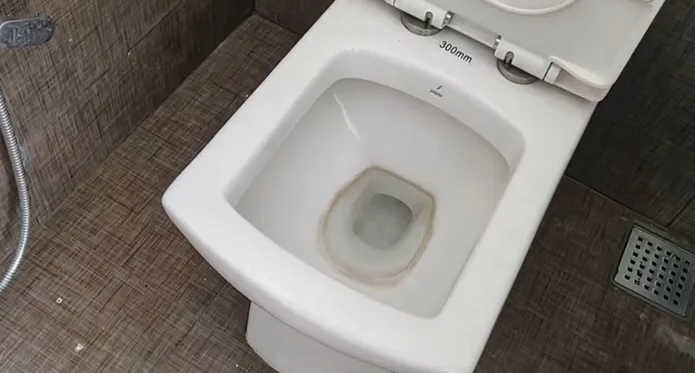Last Updated on October 17, 2023
Toilet bowl cleaners are used to clean the toilet bowl, where hard waste accumulates. These cleaners break down the organic matter that gathers in the toilet bowl, such as feces, limescale, & urine. This makes it easier to flush these contaminants away and keeps the toilet bowl clean.
But what exactly is toilet bowl cleaner acid or base? Typically, toilet bowl cleaners consist of strong acids like hydrochloric acid or sulfuric acid, as well as organic solvents to help dissolve hard-to-remove substances & stains in the toilet bowl.
The active ingredients in a toilet bowl cleaner are usually chemicals that work by breaking down the bonds between substances, making them easier to wipe away. For more information on the function of toilet bowl cleaner and whether it is acid or base, continue reading.
What Exactly is Toilet Bowl Cleaner Acid or Base?
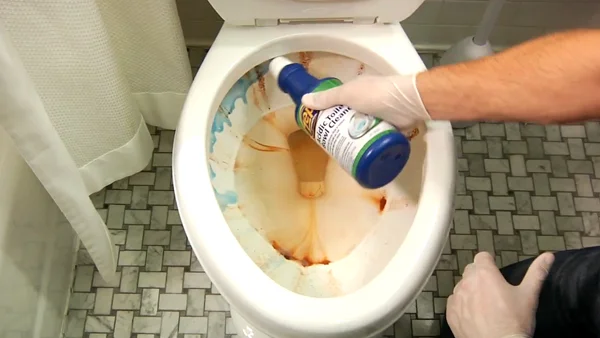
To answer this question, you must understand the chemistry of acids and bases. The amount of hydrogen or hydroxide ions present in a solution is known as its pH level.
A solution with a pH level of 7 is considered neutral, a solution with a lower pH level is considered acidic, and a solution with a higher pH level is considered alkaline. Toilet bowl cleaners typically have a pH level between 2 and 3, making them quite acidic.
This is because acidic solutions are better at breaking down organic waste materials. Also, acidic solutions are more effective at killing bacteria. For these reasons, most toilet bowl cleaners contain some form of acid.
How to Determine Whether a Toilet Bowl Cleaner Substance is an Acid or a Base?
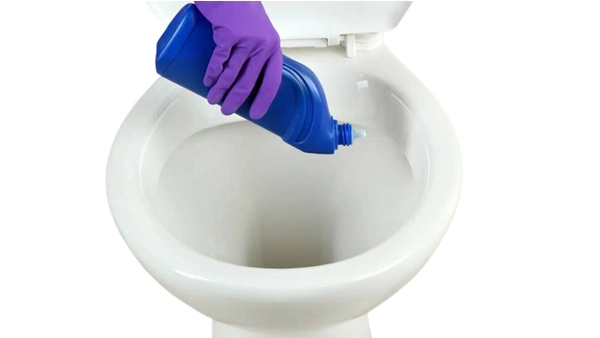
Identifying whether the toilet bowl cleaner is acidic or basic is to look at the label. Most cleaners will have the pH level listed on the label, determining whether the cleaner is alkaline or acidic.
Also, the ingredients list can help identify an acidic or basic toilet bowl cleaner. Ingredients such as hydrochloric acid, sodium hypochlorite, and citric acid are all common ingredients found in toilet bowl cleaners that are acids.
Some cleaners may be more alkaline if they are designed for use in hard water. If the cleaner contains more alkaline substances like sodium hydroxide or ammonia, it is likely to be a base.
What are Some Common Acids Used in Toilet Bowl Cleaners?
The most common acids in toilet bowl cleaners are hydrochloric acid, polyethoxylated tallow amine, and sodium hypochlorite, which are both corrosive and poisonous.
Hydrochloric acid is a highly potent acid that can burn through organic material, and Sodium hypochlorite is a bleach commonly used as a disinfectant. Together, these two chemicals can quickly break down toilet stains and buildup in a toilet bowl.

Also, some toilet bowl cleaners contain polyethoxylated tallow amine, which helps to reduce foaming. Although these ingredients effectively clean toilets, they can also be corrosive and irritating to the skin. So, you must use toilet bowl cleaners carefully and follow the manufacturer’s instructions.
Why is an Acidic Cleaner Used to Clean a Toilet Bowl?
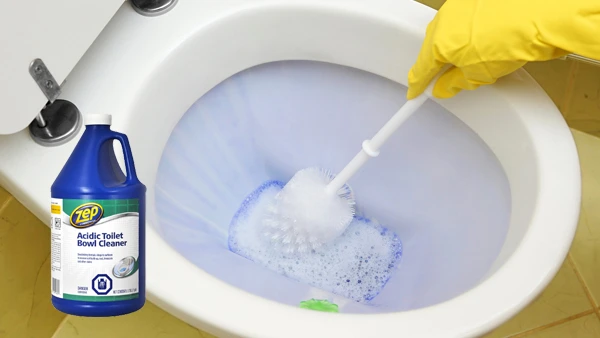
An acidic cleaner is used to maintain a toilet bowl for a few reasons:
- The acid helps to decompose and dissolve mineral deposits that can build up in the bowl over time.
- The acid also helps to remove stains from the bowl. This can be anything from rust to urine stains.
- Toilet bowls are a breeding ground for bacteria, and an acidic cleaner will help prevent bacteria’s growth.
- Some acidic cleaners often have a strong fragrance that can help to freshen up the bathroom.
- The strength of hydrochloric acid makes it effective at dissolving mineral deposits such as limescale.
While other types of cleaners can be used to wash a toilet bowl, an acidic cleaner is often the best choice for removing stubborn stains and deposits.
What Kind of Acid is Best for Toilet Bowl Cleaners?
Not all acids are created equal for toilet bowl cleaners, and not all of them are good for your health. Citric acid is a naturally occurring substance found in citrus fruits. It can exist in two forms, anhydrous (without water) or hydrous (with water).
The anhydrous form is a white, crystalline powder, while the hydrous form is a colorless pale yellow liquid. When used as a cleaning agent, the citric acid works to remove hard water deposits and scale build-up. It is also effective at removing rust stains.
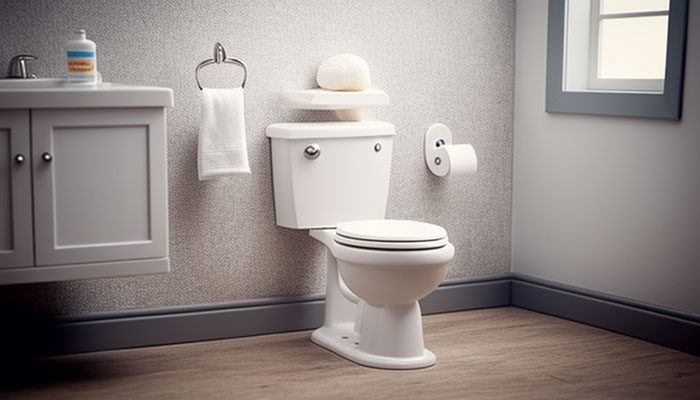
When used in toilet bowl cleaners, citric acid helps to break down and remove stubborn stains and buildup. This acid is also non-toxic and biodegradable, which makes it a safe choice for use in the home.
What is the pH Range of Acidic Toilet Bowl Cleaner?
Most toilet bowl cleaners have a pH that falls within the range of 1 to 3. This makes them quite acidic, which is necessary to clean the toilet bowl effectively. The acidity of the cleaner helps to break down any build-up of grime or residue, leaving the bowl sparkling clean.
Also, acidic cleaners are often more effective at eliminating microbes and preventing mold growth and mustiness. But, you must use these cleaners according to the manufacturer’s instructions, as they can be harmful if used in excess.
What is the Strongest Acid in Toilet Bowl Cleaner as an Ingredient?
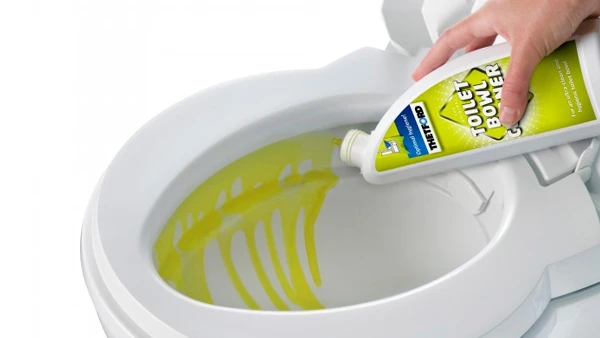
Regarding toilet bowl cleaners, the strongest acid is sodium bisulfate. This substance is also known as “sulfuric acid,” a very strong corrosive material. It is typically found in industrial strength cleaners and can be extremely dangerous if it comes into contact with skin or eyes.
It is so strong that it can even eat through some types of metal. So when using a sulfuric acidic toilet bowl cleaner, you must be very careful to avoid contact with your skin and eyes. Also, do not leave the acid cleaner unattended; follow all instructions carefully.
Can You Use Hydrochloric Acid With Bleach to Clean the Toilet Bowl?
Though hydrochloric acid and bleach can effectively clean a toilet bowl, it is not recommended to use them together as this is a dangerous combination. Bleach is a powerful oxidizer, while hydrochloric acid is a strong acid. When these two substances are mixed together, they produce chlorine gas.
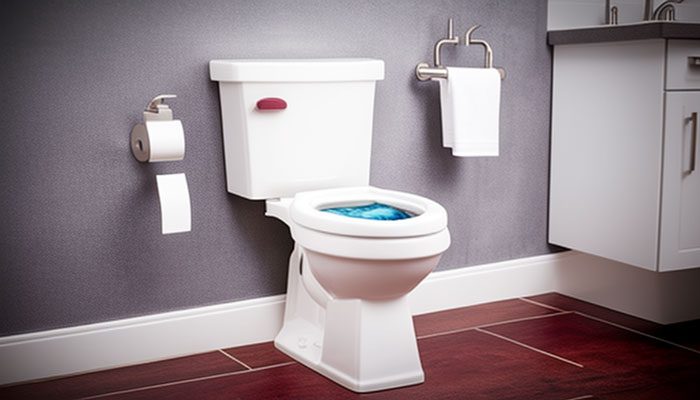
This gas can cause serious respiratory problems, and it can also be deadly. Also, combining hydrochloric acid and bleach can damage certain finishes and surfaces. For these reasons, avoiding using these two products together is best.
Are There Any Dangers of Using Acidic Toilet Bowl Cleaner?

Acidic toilet bowl surface cleaners are inexpensive and widely available, and they are usually very effective at removing tough stains, yet, you must be aware of the potential dangers of using these products:
- If the cleaner comes into contact with your skin, it can cause redness, swelling, and pain. In extreme cases, it may even lead to chemical burns.
- Inhaling the acidic fumes from an acidic cleaner can irritate your lungs and throat. If you use one of these products, open a window and wear gloves to protect yourself from potential harm.
- Some chemicals in toilet bowl cleaners can react with other cleaning products or materials, releasing dangerous gasses.
- If the acid in the cleaner is left unattended, it can eat away at the finish of your toilet bowl. Over time, this can leave your toilet looking dull and worn.
- Some acid can damage the porcelain of your toilet, making it more likely to crack or chip.
- Use caution when handling these cleaners and keep them out of reach of children and pets.
Because of these reasons, you should take caution when handling acidic toilet bowl cleaners (such as wearing respiratory masks, eye-protective glasses, and hand gloves). But, as long as you use these products safely, they can be an effective way to clean your bathroom.
Can Acidic Toilet Bowl Cleaner Harm Toilet Bowls?
Acidic toilet bowl cleaners can indeed harm toilet bowls if used improperly. Toilet bowl cleaners typically contain hydrochloric, sulfuric, and citric acids, which are very strong.
If these acids are allowed to sit on the toilet bowl for an extended period, they can eat away at the glaze that protects the porcelain. This can cause the toilet bowl to become dull and stained.
Also, these acidic cleaners can damage the rubber gaskets and seals that keep water from leaking out of the tank. Some acids in these cleaners can react with the water in your toilet bowl to create a corrosive solution. If this solution comes into contact with metal fixtures or porcelain vertical surfaces, it can cause them to pit or discolor.
For these reasons, you must use these acidic chemicals carefully when cleaning your toilet bowl. You should always follow the manufacturer’s instructions and wear protective gear when handling these products.

